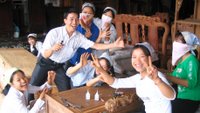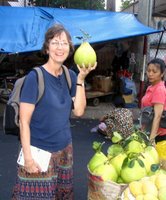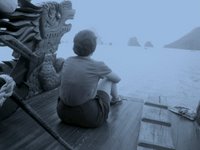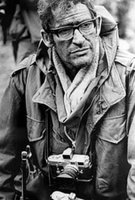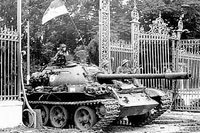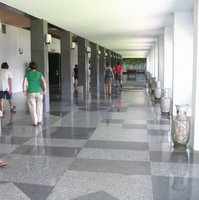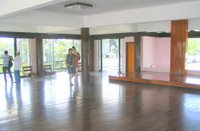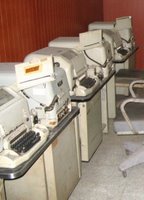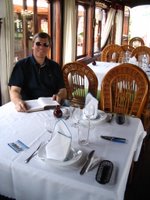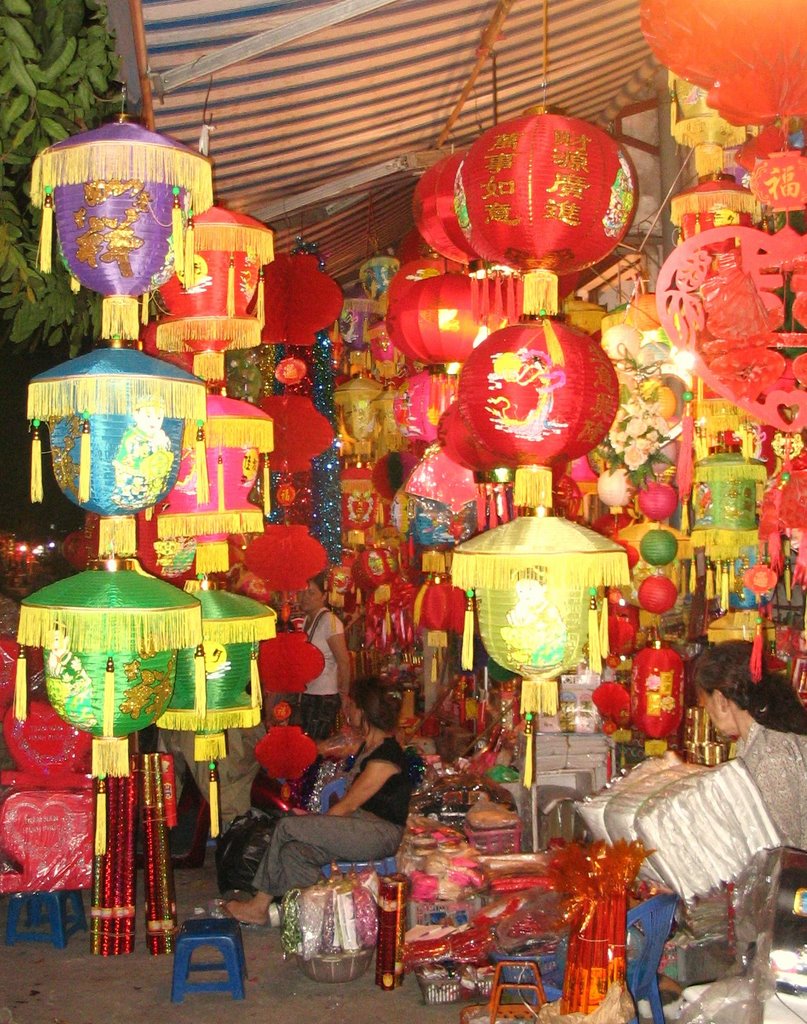Outside Hanoi We got an early start on our day tour outside Hanoi that took us to the pottery village of Bat Trang, the But Thap Buddhist Pagoda, the home of a local artist in Dong Ho and finally to a furniture village. Our driver and guide arrived promptly at 8:00 AM and we were on our way.

Bat Trang is popular stop on the tourist trek.
A whole street of pottery/ceramic shops display wares from playful pooches to tortoise-shaped planters.
We stopped at the Minh Hai Ceramic Company and

had an interesting tour of the pottery process.
We saw the mixing of the slip (the base material for the pottery), to the pouring, cleaning, firing
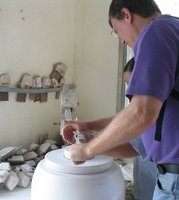
and painting of the pottery.
The staff was quite accustomed to visitors and welcomed Jay to try his hand in shaping a bowl.
 After some additional cleaning, the pottery is hand painted. Working with finely pointed brushes, a small staff of young artists moved with ease adorning the plain white pottery with goldfish, dragon flies and floral designs.
After some additional cleaning, the pottery is hand painted. Working with finely pointed brushes, a small staff of young artists moved with ease adorning the plain white pottery with goldfish, dragon flies and floral designs.
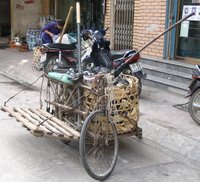
It was on the streets of Bat Trang that we first noticed how bicycles have been converted via the extension of two suspended platforms into mini trucks. A long pole attached to the handle bar allowed the “driver” to steer the cargo. A simple invention of great utility.
Next was the But Thap Buddist Pagoda, located on the bank of the Duong River, about 30 kilometers northeast of Hanoi. Originally built in the 13th century by the Tran dynasty, it has been rebuilt and restored several times. The last 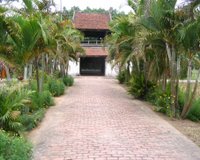 restoration was completed with the help of Germany in the 1990’s.
restoration was completed with the help of Germany in the 1990’s.
As one walks along the entranceway to the pagoda, a sense of serenity and peacefulness is felt. Inside, the smell of incense fills the air. The temple complex contains 10 buildings, long hallways and cozy courtyards. Our grasp of Buddhism is weak so we relied on our guid
and peacefulness is felt. Inside, the smell of incense fills the air. The temple complex contains 10 buildings, long hallways and cozy courtyards. Our grasp of Buddhism is weak so we relied on our guid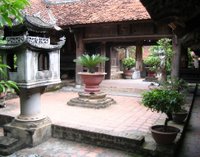 e to gather fragmentary
e to gather fragmentary  understandings. We learned that symbolic offerings of money to the gods include the burning of photocopies of $100 bills. More evidence of war-time healing.
understandings. We learned that symbolic offerings of money to the gods include the burning of photocopies of $100 bills. More evidence of war-time healing.
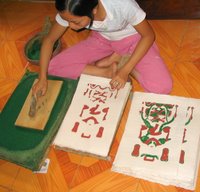
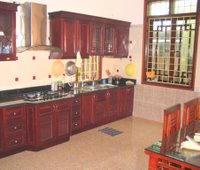 Our next stop was at the home of a local artist. The home was upscale by any standard. We saw block printing and hand painting being done. We purchased
Our next stop was at the home of a local artist. The home was upscale by any standard. We saw block printing and hand painting being done. We purchased scroll paintings depicting the four seasons, wrote a few comments in the guest log and we were off to the furniture village.
scroll paintings depicting the four seasons, wrote a few comments in the guest log and we were off to the furniture village.
The last stop was anti-climactic. Rather than seeing furniture being crafted from exotic woods, we visited a furniture show room where some young gals were polishing furniture for display. They, along with our guide, were an energetic bunch ready to ham it up for the camera.
being crafted from exotic woods, we visited a furniture show room where some young gals were polishing furniture for display. They, along with our guide, were an energetic bunch ready to ham it up for the camera.
Once back to the hotel, our guide helped us purchase tickets for the Water Puppet show later that day. It was a great day of adventure.
 We have kept in e-mail in touch with Hai Pham, our young enterprising Vietnamese guide from
We have kept in e-mail in touch with Hai Pham, our young enterprising Vietnamese guide from 
